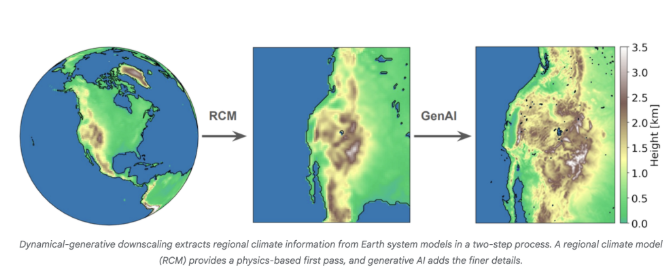Google AI Revolutionizes Climate Predictions with 10km Accuracy
Climate scientists face a critical challenge: while Earth system models help predict environmental changes, their computational demands limit resolution to about 100 kilometers—roughly the size of Hawaii. For practical applications like agriculture and disaster response, city-scale predictions at 10-kilometer resolution are essential. Google's breakthrough solution merges traditional physics with cutting-edge AI to deliver precisely these detailed forecasts.

Bridging the Gap with Dynamic Generative Downscaling
The new approach, called "dynamic generative downscaling," uses diffusion models—a type of AI that excels at recognizing complex patterns. These models transform broad global climate data into hyper-local forecasts while maintaining physical consistency. Unlike traditional methods that require massive computing power, this technique achieves high-resolution results at a fraction of the cost.
The R2D2 Breakthrough
At the heart of this innovation lies R2D2 (Regional Resolution Dynamic Downscaling), a two-stage process that first uses physical simulations to reach intermediate resolutions, then employs generative AI to fill in fine details. The system learns from high-resolution examples, capturing terrain-influenced weather patterns that conventional statistical methods often miss. This hybrid approach not only improves accuracy but adapts well to new climate scenarios.
In tests across the western United States, R2D2 outperformed traditional methods by reducing prediction errors for temperature, humidity and wind speed by over 40%. It particularly excelled at modeling complex events like heatwave-drought combinations and wildfire-risk wind patterns—all while using just 15% of the computational resources required by conventional high-resolution modeling.
Transforming Climate Adaptation
The implications are profound. Farmers could receive field-specific drought warnings months in advance. City planners might simulate flood risks block by block. Emergency managers could pinpoint areas most vulnerable to extreme weather with unprecedented precision.
"This isn't just about sharper maps," explains the research team. "It's about turning global climate projections into actionable local intelligence—faster, cheaper and more accurately than ever before." The method's 85% reduction in computational costs makes detailed climate risk assessment feasible for communities worldwide.
As climate change intensifies, such tools become increasingly vital. Google's innovation demonstrates how AI can amplify—rather than replace—decades of climate science, giving decision-makers the granular data they need to protect vulnerable populations.
Key Points
- Google's AI-enhanced method achieves 10km climate prediction resolution—10 times sharper than current standards
- The R2D2 system combines physical modeling with generative AI, reducing errors by 40% compared to traditional approaches
- Computational costs drop by 85%, making high-resolution forecasting accessible globally
- Particularly effective for complex events like compound heatwaves and wildfire conditions
- Enables precise local planning for agriculture, infrastructure and disaster preparedness